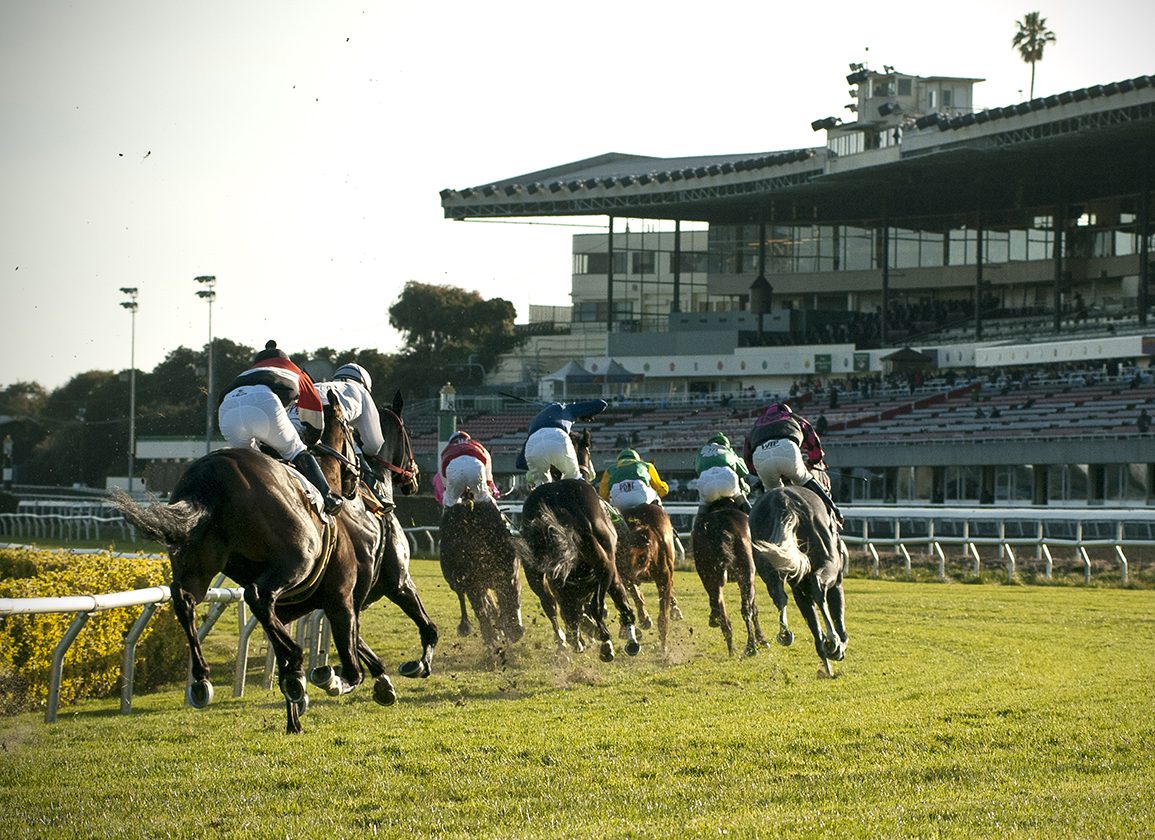By Dan Ross
Sunday's news that The Stronach Group (TSG) will close its flagship Northern California racetrack, Golden Gate Fields, at the end of the year has ripped through the state racing industry like a cannon shot.
It has left owners, breeders, trainers, grooms and a whole multitude of individuals whose livelihoods hinge around the sport scrambling for answers as they attempt to plot their futures in a vacuum of hard facts.
Instrumental in this confusion is the glaring dearth of public information coming out of TSG. Every day this week, the TDN has submitted a series of basic questions about the company's decision to sell Golden Gate Fields and its short- and long-term plans in California.
TSG has responded only once, on Monday, pointing to its Sunday statement–a statement scant on detail.
Seeking clarification therefore on the reasons behind, and ramifications from, Sunday's news, TDN spoke with Greg Ferraro, the California Horse Racing Board (CHRB) chairman.
Ferraro didn't just speak about Golden Gate Fields, but also shared his thoughts and concerns surrounding the ongoing rollout of the Horseracing and Integrity Act's anti-doping and medication control program (ADMC).
The HISA-related portion of this interview will be published in part two in Saturday's TDN.
The following has been lightly edited for brevity and clarity.
TDN: When did you first know that TSG was selling Golden Gate?
GF: The staff at CHRB heard about it last Friday. Somebody from the agency called with some questions about Golden Gate. [CHRB] staff said, 'well, why are you asking these questions?' And they said, 'Well, the state was in negotiations to make a deal on Golden Gate.'
Then we called The Stronach Group executives and said, 'Do you know what's going on?' They said, 'Yes, Golden Gate is going to be sold,' and asked us to keep it confidential until Monday when they intended to make an announcement. But obviously, it leaked and came out on Sunday.
TDN: Is the end date for Golden Gate of December 2023 set in stone?
From what my sources told me yesterday, yes, that's set in stone. Any idea of extending dates beyond [Dec.] 18th is a no go.
TDN: Do you know what the motivating factors were in the decision?
No, I don't. Probably the ability to make a deal with the state. Developers have never been interested in the Golden Gate property because of the height limit [on developments]. You can't develop it to make any money.
TDN: Is that what it's going to be used for, a park?
It's not final yet, but I know that's what the negotiations are about.
TDN: Do you think that proposed Berkeley City Council ordinance had any sway in the decision?
I don't think so. Golden Gate has fought those battles before, and I think they would have fought it again.
TDN: What do you make of TSG's argument that this consolidation will reinvigorate racing at Santa Anita?
They claim that they're going to make capital investments in San Luis Rey and Santa Anita to improve racing and make up for the difference of the loss of training facilities in Northern California. I don't know how that's going to work. We'll have to wait and see what they propose.
TDN: Do you know what those capital improvements are?
No, I don't. They haven't detailed anything yet. I assume by our board meeting in August [16th] they'll have some kind of a proposal.
TDN: You haven't seen any detailed TSG proposal yet?
No, I haven't.
TDN: Does it concern you that they'd make such a momentous decision without simultaneously sharing with the public their vision for the future?
It could have been presented a little better, let's just say.
TDN: Are you worried that they don't have a detailed plan?
I'm worried that the proposal is not going to satisfy the needs of the Northern California horseman.
TDN: What do you make of CARF's proposal for Cal Expo to become a hub of racing in the north?
It's an interesting proposal. They're talking about Pleasanton, Santa Rosa and Cal Expo, with the idea that they could race maybe up to 10 months and have their headquarters at Cal Expo.
The problem is the harness [racing industry] has a 10-year contract for training at Cal Expo. So, I don't know where harness racing would go or how you would get around that. But I think it's worth looking at. It's something California horsemen and the breeders are certainly interested in.
TDN: How important is maintaining a substantial racing presence in Northern California for the future of California racing, in your opinion?
It's vitally important. If you just take a look at the foals bred in California, 35% of them race at Golden Gate Fields. That's a substantial number of horses. The thought of moving all these horses to southern California, there's only 20% of them that are suitable for down here. So, what are you going to do with the rest of the horses?
I think some sort of Northern California [circuit], or if it's not Northern California alternate track somewhere, would be necessary for the viability of racing.
TDN: If TSG's vision goes ahead and you see those horses from up north come down south to consolidate racing down there, could that facilitate the collapse of the breeding industry in California, which already isn't terribly healthy?
That's what the breeders are worried about. Yes.
TDN: Are you worried about it as well?
Fifty percent of the horses that race at Santa Anita are California-breds, and that's only 20% of the foal crop.
TDN: It sounds as though then you're leaning towards the CARF proposal.
I think it's interesting. I wouldn't say I'm leaning towards anything at this point. Myself and the rest of the board, we feel it's up to the industry to really solve this problem. We can't do it. The board can't do it. We can assist. We can approve any proposals that look interesting.
But I think at this point, the board would sit back and wait and see what the industry comes up with, what alternate plans they have, and then we can help guide or participate with the industry to solve the problem.
CARF's proposal is interesting. We haven't seen yet what The Stronach Group's proposal is. And maybe there are alternate proposals. Everything's happened so fast that we really haven't had time to dig into what the proper solution would be.
TDN: TSG has been quiet since the announcement, at least publicly. Could the CHRB hold an emergency meeting before Aug. 16 to force the company to divulge information that stakeholders need?
It's something we would consider, but there's no sense holding the emergency meeting if there's no information to come forward at that meeting. So, right now we're looking at different groups to see if they have their proposals consolidated enough to give us a chance to look at it.
I have the feeling–I don't know–but I have the feeling since The Stronach Group hasn't put anything out there yet, that perhaps they don't have their plans fully developed.
TDN: If indeed TSG doesn't have a solid plan, given how integral they are to the future of California racing, do you have concerns about their approach to conducting their business?
Of course. Yes.
The other issue is the money. Betting in Northern California, the money stays in Northern California. In Southern California, the betting stays in Southern California. But The Stronach Group is looking at these capital expenditures. They're going to request part of the Northern California money, and I'm sure that the other groups like CARF and perhaps the breeders are going be opposed to that. So, the real fight may be over where the funds go.
TDN: Speaking of capital expenditures, I think a key thing for many trainers, and certainly the stable staff and the grooms, are the backstretch living conditions at Santa Anita. If indeed TSG succeeds in its plans, could a rehaul of the Santa Anita backstretch be a condition of their license?
Absolutely. It would be.
We're always concerned about the welfare of the backstretch workers given Santa Anita as it stands now. They couldn't absorb any more backstretch workers in those facilities. And so, something would have to be done.
The welfare of the backstretch workers is a primary concern for the board. As it is, where are those people going to go after Dec. 18th? I mean, the week before Christmas, they're out of work, you know? And, and so, that's quite a concern for us as to what's going to happen to those people.
TDN: What do you see when you plot California racing's future–especially a likely future without Los Alamitos. And what role could and should the CHRB play in shoring things up?
It's a concern to us. I mean, Los Alamitos is probably short-lived. If something happened to Doc. [Dr. Ed] Allred, I think that would be the end of Los Alamitos. That leads to Santa Anita and Del Mar. And given the value of Santa Anita's property and The Stronach Group's performance so far, you wonder how long Santa Anita could survive.
So yes, the CHRB is quite concerned about the continued viability of California racing. It's mostly in the hands of the industry. But we're certainly going to take any steps we can to help the industry survive and be healthy.
Not a subscriber? Click here to sign up for the daily PDF or alerts.






